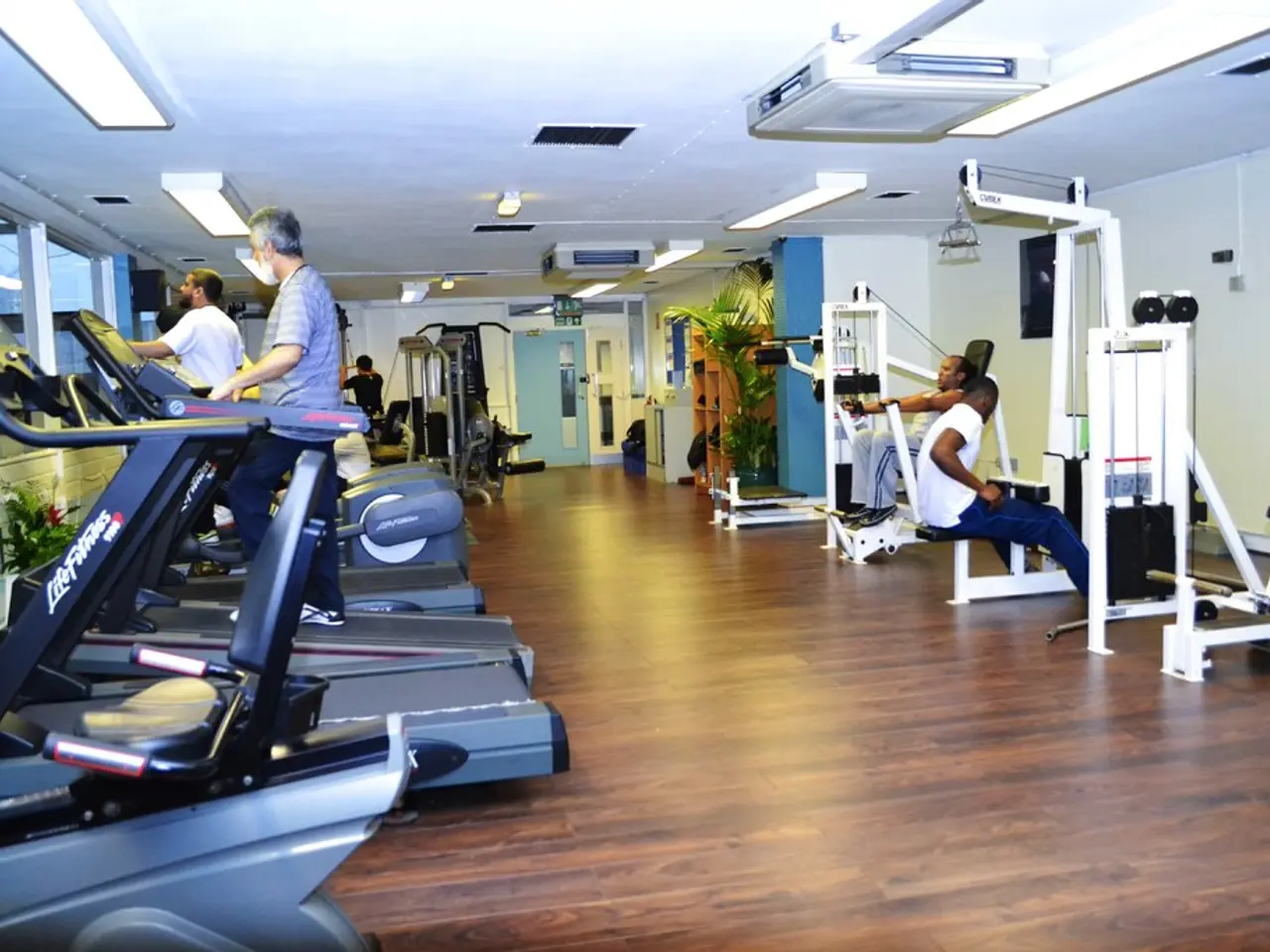Tips for Getting Active and Beginning Your Workout Routine
In today's fast-paced world, finding time for exercise can be challenging. However, incorporating a balanced exercise routine into your daily life offers numerous benefits that extend beyond physical fitness.
Balanced Development & Injury Prevention
By targeting different muscle groups through a variety of exercises, you can prevent overuse injuries and ensure balanced strength and flexibility across the body [1]. This is crucial for sports enthusiasts, as agility and speed work, essential for sports like tennis, soccer, basketball, martial arts, volleyball, and everyday life, improve balance, reflexes, and control during fast directional changes, helping prevent falls and injuries.
Cardiovascular Health
Aerobic exercises, such as walking, running, swimming, or cycling, improve heart function and circulation, lowering the risks of heart disease and stroke even when done in short bursts [3]. Regular physical activity affects nearly every system in the body, improving brain and heart health.
Muscular Strength and Endurance
Anaerobic and strength-focused exercises, like weightlifting and high-intensity interval training (HIIT), promote muscle growth and endurance, increasing the ability to perform daily activities [3]. Building muscle also burns more fat even while resting, making metabolism more efficient over time.
Functional Fitness & Mobility
Incorporating agility, speed, and mobility training enhances real-life movement patterns, coordination, and reduces injury risk [2][5]. This is particularly beneficial for older adults, who may find these exercises helpful in maintaining independence and mobility.
Flexibility
Regular flexibility exercises, like yoga, Pilates, and tai chi, improve range of motion, supporting better posture and reducing muscle stiffness [5]. These practices also support joint health, circulation, and enhance recovery after more intense workouts, and reduce stress levels.
Mental Well-being
Physical activity triggers endorphin release, improving mood, reducing anxiety and stress even with brief daily sessions [3]. Regular exercise has been shown to boost self-esteem, focus, and memory, and reduce the risk of depression.
Time Efficiency
"Micro-workout" approaches, such as short, daily sessions, can still deliver meaningful improvements, especially for busy individuals [1][2]. A 10-minute burst of moderate exercise can boost mood, increase focus, and support memory.
Accountability and Goal Setting
Finding accountability (e.g., a friend, class, or community) helps maintain consistency. Setting a goal that has personal meaning drives better results. Starting with small, manageable goals (like three short walks a week) and gradually increasing is more effective than trying to do too much at once.
Preventing Burnout and Plateaus
Changing the exercise routine every few weeks can prevent plateaus or boredom. Overtraining, monotony, and lack of recovery can lead to burnout, injury, and hormonal imbalance. Embrace the truth that something is always better than nothing, and the best time to start exercising is right now.
Nutrition and Strength Training
Combining cardio and strength training with good nutrition creates an ideal environment for fat loss and lean muscle growth. Remember, more exercise doesn't necessarily lead to better results; smarter exercise is more beneficial.
Starting Out and Seeking Help
For beginners or those returning from a break, the minimum effective dose includes 150 minutes of moderate-intensity aerobic activity per week, 2 strength sessions per week, and stretching or flexibility practice 2-3 times per week. Hiring a coach or trainer can help prevent injury, track progress, and make workouts less overwhelming.
In conclusion, combining diverse exercise types in short, consistent daily routines supports holistic health benefits—cardiovascular, muscular, functional, and mental—making such training effective and manageable [1][2][3][5]. So, whether you're a seasoned athlete or just starting out, remember that every step towards a healthier lifestyle is a step in the right direction.
[1] American College of Sports Medicine. (2020). ACSM's Guidelines for Exercise Testing and Prescription. Lippincott Williams & Wilkins.
[2] World Health Organization. (2020). Global Recommendations on Physical Activity for Health. World Health Organization.
[3] National Institute for Health and Care Excellence. (2019). Physical activity: brief advice for adults in primary care. National Institute for Health and Care Excellence.
[4] Centers for Disease Control and Prevention. (2020). Physical Activity for Everyone. Centers for Disease Control and Prevention.
[5] Mayo Clinic. (2020). Exercise and physical activity: your every day guide from the American Heart Association. Mayo Foundation for Medical Education and Research.
- By focusing on balance in exercise routines, we can prevent overuse injuries and ensure that the body maintains a balanced strength and flexibility across various muscle groups, benefiting not only sports enthusiasts but also everyday life activities.
- Combining different types of exercises, such as aerobic, anaerobic, flexibility, and strength training, with good nutrition can create an ideal environment for fat loss, lean muscle growth, cardiovascular health, and mental well-being.




